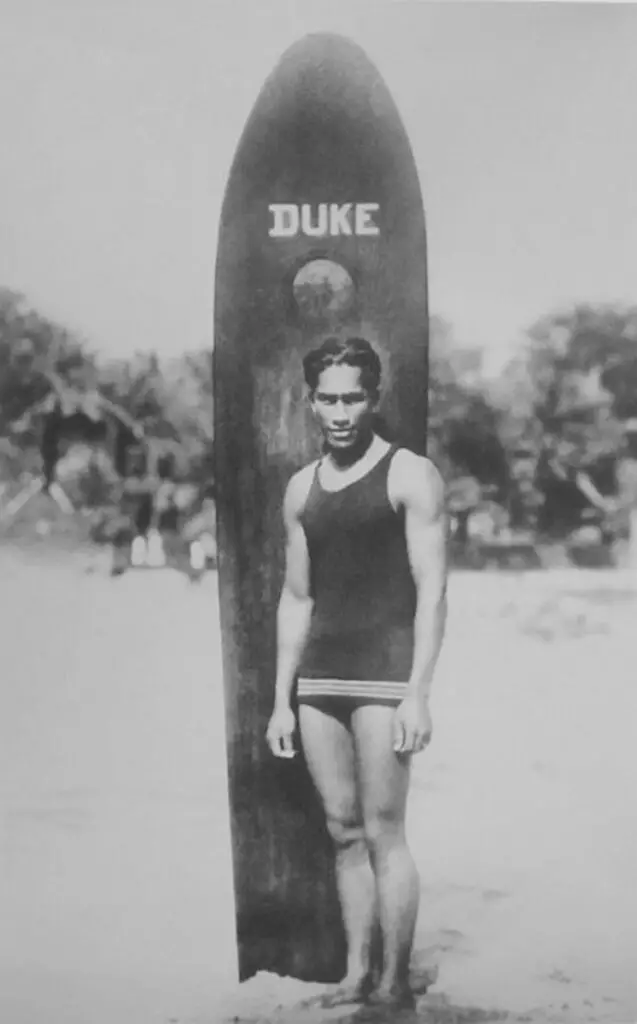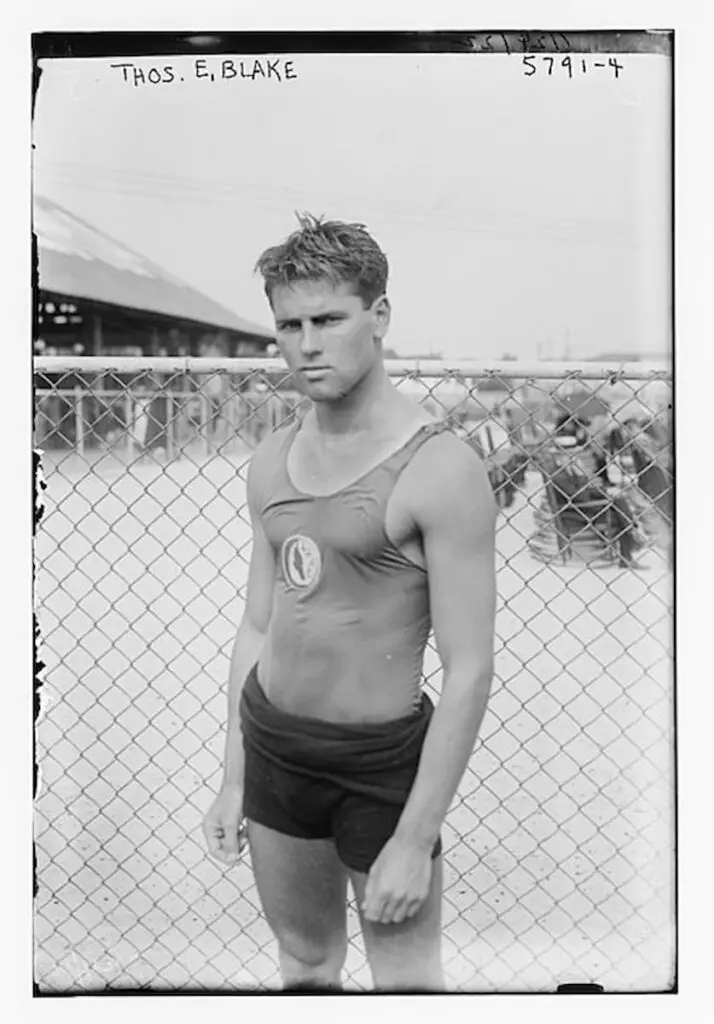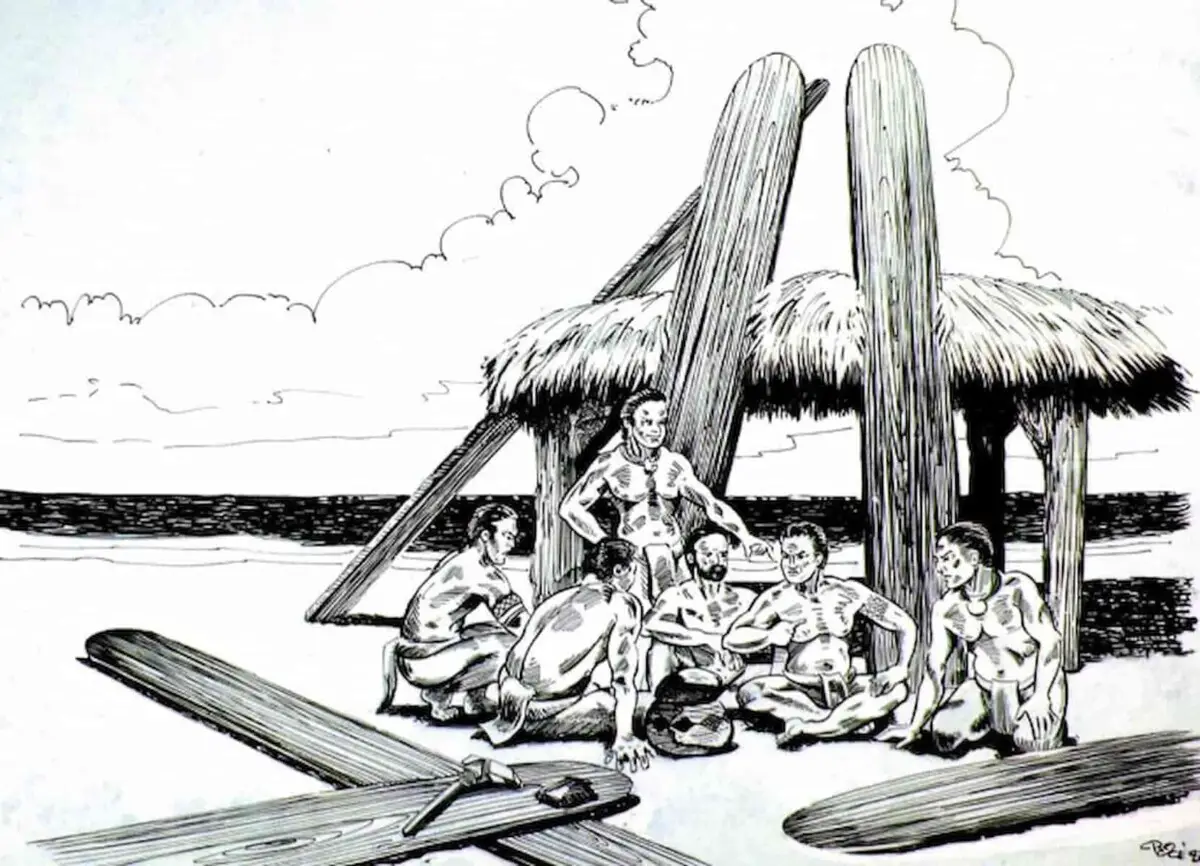The origins of surfing can be tracked over a thousand years to the Polynesian people, who embraced surfing not only as a recreational pastime, but also as a deeply spiritual and cultural practice. However, unfortunately because of this fact one specific inventor of surfing is not someone we know as the sport has been around so long its difficult to know who first created it.
Surfing, a sport that has captivated millions around the world, has a rich history and a fascinating origin story. Whether you are a seasoned surfer or simply fascinated by beach culture, the history of surfing provides an intriguing glimpse into an activity that has become synonymous with sun, sand, and the spirit of freedom. Join us as we dive into the complex roots and evolution of the sport, the introduction of key figures and advancements, and explore how surfing has influenced popular culture and the future of the sport.
The Origins of Surfing
The beginnings of surfing can be traced back over a thousand years to the Polynesian people, who embraced surfing not only as a recreational pastime, but also as a deeply spiritual and cultural practice. Let’s explore how surfing evolved from these ancient roots to become the global phenomenon it is today.
Ancient Polynesian Culture and Surfing
Long before Western explorers arrived in the Pacific, Polynesian people had already mastered the art of riding waves on boards made from locally sourced materials. Surfing was not simply a recreational activity in these societies; it was an integral part of their culture, imbued with spiritual significance, and intertwined with social status and even politics. Wave riding was a skill passed down through generations, and everyone – men, women, and children – could participate in the activities.
Surfing played a pivotal role in the daily life and traditions of these early island communities. It was believed that the Polynesian gods were pleased when the people enjoyed the ocean and engaged in surfing, with rituals often accompanying the act of catching waves. The ocean, in turn, provided sustenance, transportation, and entertainment, solidifying the strong bond between the islanders and their environment.
The Spread of Surfing to Hawaii
As Polynesians migrated eastward, eventually settling in Hawaii, they brought with them their surfing traditions. The Hawaiians embraced the sport and elevated it to new heights, adding their own innovations and rules to its practice. By the time Western explorers came to the islands, surfing had become a critical element of Hawaiian culture, with the islanders riding waves on boards that were sometimes over 20 feet long.
The first recorded European encounter with surfing occurred when Captain James Cook witnessed the natives practicing their wave-riding skills in 1778. However, it wasn’t until the 20th century that the sport began to experience a surge of interest and expansion beyond the islands, largely due to the efforts of dedicated surfers and visionaries who believed in the sport’s potential.
Traditional Surfboard Materials and Designs
Early surfboards were primarily made of wood, sourced from local trees such as koa or wiliwili in Hawaii. The designs varied in size and shape, reflecting the diverse range of wave-riding styles and abilities of ancient surfers. The Hawaiians often employed three main types of boards: the ‘olo,’ which was a long board reserved for royalty, the ‘alaia,’ which was a shorter, thinner board for more experienced surfers, and the ‘paipo,’ a small board for children and those learning the basics of wave riding.
These traditional wooden surfboards were heavy and difficult to maneuver, but the skills honed by generations of Polynesian and Hawaiian wave riders laid the foundation for the modern surfing techniques and equipment that we know today.
The Evolution of Surfing
As the world began to take notice of the sport, surfing underwent a series of transformations that reshaped its identity and pushed it towards the competitive and accessible activity we recognize today.
The Introduction of Western Influence
Despite the cultural significance of surfing to the native Hawaiians, the arrival of missionaries in the 19th century led to a decline in the practice of the sport. As their influence spread, the missionaries discouraged surfing, which they frowned upon due to its close association with ancient religious practices and its perceived impact on productivity. Consequently, surfing almost vanished from the Hawaiian Islands.
However, in the early 20th century, a resurgence of interest in the sport began to take hold, as a group of surfers and enthusiasts – both native Hawaiian and Westerners – sought to revive surfing and rescue it from the brink of cultural extinction.
The Birth of Modern Surfboard Design
One of the key developments in the evolution of surfing was the introduction of new surfboard designs and materials. In the 1900s, traditional wooden surfboards gave way to more advanced construction methods involving foam, fiberglass, and eventually carbon fiber, transforming the once heavy, cumbersome boards into sleek, lightweight, and high-performance wave-riding machines.
Innovators like George Freeth, Duke Kahanamoku, and Tom Blake played an essential role in the ongoing search for the perfect surfboard design. From hollow boards to the introduction of the fin, these visionaries helped shape the modern surfboard and propelled the sport of surfing to new heights.
The Emergence of Competitive Surfing
The introduction of modern surfboard designs and the spreading of surfing culture beyond Hawaii’s shores laid the foundation for competitive surfing events. In the 1950s, surf competitions began cropping up in California, Australia, and South Africa, helping to establish surfing as a legitimate athletic pursuit.
These contests attracted the best surfers from around the world, showcasing their skills on the global stage and influencing the future direction of the sport. Over time, numerous organizations and competitive formats emerged, with the World Surf League (formerly ASP) now regarded as the premier organization governing competitive surfing worldwide.
Key Figures in Surfing History
The history of surfing is filled with passionate individuals who shaped the sport and its culture. Here are just a few of the most influential figures to grace the waves.
Duke Kahanamoku: The Father of Modern Surfing

Duke Kahanamoku, an Olympic gold medal-winning swimmer and native Hawaiian, is widely regarded as the father of modern surfing. As an ambassador for the sport, Kahanamoku traveled the world spreading his love of surfing and introducing it to new audiences. Through his efforts, he helped to revive the near-extinct surfing tradition in Hawaii and ignited a global passion for the sport.
Throughout his storied surfing career, the Duke broke numerous world records, inspired countless surfers, and left an indelible mark on the sport that continues to influence the surfing world today.
Tom Blake: Innovator and Surfing Pioneer

Tom Blake, a legendary surfer and innovator, was instrumental in transforming the design and construction of surfboards. By introducing concepts such as the hollow surfboard, skegs (fins), and experimenting with new materials, Blake’s innovations shaped the modern surfboard – and by extension, the sport itself – in profound ways.
Blake also played a significant role in promoting surfing, pioneering surf lifesaving techniques, and helping to establish surfing competitions, solidifying his status as one of the most important figures in the sport’s history.
Miki Dora: The Black Knight of Surfing

Miki Dora, affectionately dubbed the “Black Knight of Surfing,” was a rebellious figure who embodied the spirit of surf culture and pushed the limits of wave riding. Active from the 1950s-70s, Dora was known for his creative, stylish, and often unorthodox approach to surfing.
Although Dora’s controversial antics and anti-establishment persona often courted controversy, there’s no denying the impact he had on the evolution of surf culture and the sport’s connection to the counterculture movement.
Surfing’s Influence on Popular Culture

Over the years, the sport of surfing has seeped into popular culture, leaving a lasting imprint on music, film, fashion, and lifestyle.
Surf Music and the Beach Boys
Surf music emerged in the 1960s as a distinctive genre combining instrumental rock and roll with the laid-back vibes of beach culture. This genre reached its peak with the popularity of bands like The Beach Boys, whose catchy tunes and distinct sound captured the spirit of the surf scene and helped propel it into the mainstream consciousness.
Although the popularity of surf music eventually waned, its iconic sound and influence continue to be celebrated and appreciated today.
Surf Films and Documentaries
Surf films and documentaries have played a significant role in documenting the sport’s history, capturing the captivating beauty of wave riding, and inspiring new generations of surfers. From iconic surf movies like “The Endless Summer” and “Big Wednesday” to modern documentaries like “Riding Giants” and “Step Into Liquid,” these visual explorations of the sport have helped bring surfing to a wider audience and contributed to its ongoing evolution.
Surfing Fashion and Lifestyle
From board shorts and wetsuits to bikinis and flip flops, surf-inspired fashion has long had a significant impact on trends and style. Major brands like Quiksilver, Billabong, and Rip Curl began as surf-focused enterprises and grew to become global lifestyle brands. The casual, beach-inspired aesthetic continues to be embraced by people worldwide, even in places far from the ocean.
The lifestyle associated with surfing also plays a significant role in shaping the way people view the sport, with values such as freedom, individuality, and a deep respect for the ocean often associated with surf culture.
The Future of Surfing
The coming years promise continued growth and development for the sport of surfing. Let’s take a look at some elements of its future trajectory.
Advancements in Surfboard Technology
Surfboard design and technology are constantly evolving, with new materials and construction techniques leading to even lighter, stronger, and more versatile boards. Innovations such as hydrofoil surfboards, which use underwater wings to lift the board above the water’s surface, demonstrate the continuing drive to push the boundaries of what can be achieved on a surfboard.
The Inclusion of Surfing in the Olympics
The inclusion of surfing in the Olympics is a significant indication of the sport’s growing recognition on the world stage. This event not only showcases the best surfers in the world and introduces the sport to new audiences, but it also affirms the recognition of surfing as a legitimate and globally viable athletic pursuit.
Check out our article on when surfing got into the olympics but also how it got to that stage
The Growth of Surfing as a Global Sport
With more surf schools, surf parks, and artificial wave technology surfacing worldwide, the sport’s accessibility and popularity continue to grow. From diverse surf destinations like Iceland and South Korea to the emergence of new surfing talent from all corners of the globe, the future of surfing looks brighter than ever.
In conclusion, the history of surfing is a rich and captivating story that reveals the sport’s ancient origins, its evolution over time, and the passionate individuals who have shaped its development. As surfing continues to grow in popularity and influence, it will undoubtedly remain a defining thread in the vibrant fabric of human culture.
